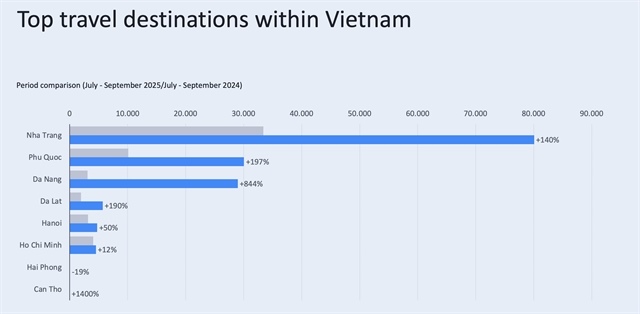Da Nang breaks ground on $47mn seaport after turning down ODA loan
Da Nang breaks ground on $47mn seaport after turning down ODA loan
A seaport developer in the central city of Da Nang, which made headlines last year for refusing to use official development assistance (ODA) loans for a multimillion-dollar project, finally turned the first sod at the port on Sunday.
Da Nang Port is confident that its own budget and money mobilized from domestic sources are enough to fund the VND1.07 trillion (US$47.77 million) project, the second phase of a plan to upgrade and expand the existing Tien Sa Port.
Slated for completion by March 2019, the new seaport consists of eight docks, seven of which are capable of harboring container ships, while the remaining is poised to receive 200 tourism vessels at a time.
The docks are designed to handle 75,000-ton ships and able to meet all requirements of the world’s most demanding shipping lines, according to the developer.
Once put into use, the new seaport will increase the loading capacity of Tien Sa Port to 12 million metric tons of goods, and 200,000 sea tourists per year.
Nguyen Huu Sia, general director of Da Nang Port, has previously left members of the public in shock by announcing that he would not accept any ODA loan to fund the expensive project.
“I will step down from my post if I fail to mobilize enough domestic funding for the project,” he asserted during a meeting with the city’s top leaders on March 27, 2015.
At that point, the Da Nang administration had already reached an agreement to borrow VND1 trillion ($44.64 million) in Japanese ODA.
The municipal administration said the seaport project will play a crucial role in the city’s economic development plan, so it should have a stable source of funding.
However, Da Nang Port later turned down the loan offer, requesting to be allowed to develop the project on its own.
The company’s chief said on Sunday that he had kept his word.
Sia said Da Nang Port’s budget can cover 35 percent of the needed capital, and the company had successfully mobilized another 35 percent from its shareholders and the state-run Vietnam National Shipping Lines. The remaining 30 percent is funded by bank loans, he added.
“All of these finances are readily available, ensuring that the project will be completed on time,” he said.
The rejection of the ODA loan by Da Nang Port could be seen as unprecedented in Vietnam, and has generated mixed responses.
Some said it is a sign that Vietnamese businesses are strong enough to be less reliant on foreign capital, while critics are concerned the project may fail to reach completion if the developer is unable to mobilize enough money as claimed.



















